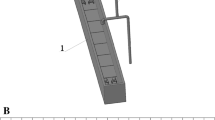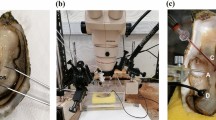Abstract.
The sensory basis of olfactory search behavior was investigated in the banded kokopu, Galaxias fasciatus, using a flow tank. In the presence of a 2 cm s–1 current flow, banded kokopu use both water current and chemical information to locate a food odor source. The superficial neuromasts of the lateral line system mediate the rheotactic component of the odor search. A physical block of one olfactory nostril did not affect the olfactory search strategy employed by banded kokopu in still water or in the presence of a current flow. Thus, there is no evidence that banded kokopu perform a bilateral comparison of the olfactory stimulus during their odor search. Previously, olfaction and gustation have been the only sensory systems shown to directly mediate orientation and movement towards odor sources in fish. The use of hydrodynamic cues by fish in location of an olfactory source has been previously proposed, but without direct experimental identification of the sensory systems employed. This study identifies the contributing roles of both olfactory and hydrodynamic sensory systems to the olfactory search repertoire of fish.
Similar content being viewed by others
Author information
Authors and Affiliations
Additional information
Electronic Publication
Rights and permissions
About this article
Cite this article
Baker, C.F., Montgomery, J.C. & Dennis, T.E. The sensory basis of olfactory search behavior in banded kokopu (Galaxias fasciatus). J Comp Physiol A 188, 553–560 (2002). https://doi.org/10.1007/s00359-002-0329-3
Accepted:
Issue Date:
DOI: https://doi.org/10.1007/s00359-002-0329-3




